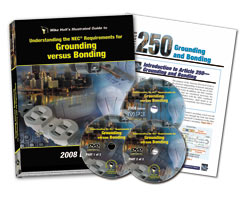Volta
Senior Member
- Location
- Columbus, Ohio
Think of the transformer as its two main components:into the xformer i have a-b-c with a ground and no neutral. from the xformer i have a-b-c-n with a ground. x0 is not bonded to the ground, but the subpanel is grounded with its own grounding conductor. from what i know x0 is not required to be bonded? do any of you believe that could be the cause...because the secondary neutral is not bonded? what gets me is that other circuits from the SAME secondary panel do not have this problem. just these 8 circuits feeding this little upfit. my thinking was that its something to do with the circuits being multi-wire circuits, but ive never had that problem before, and like i said those breakers were off, and the ungroundeds did not have voltage.
1. The metal non-current carrying enclosure, and
2. The windings.
The first you took care of by the feeding EGC. Ok.
The second though is a new electrical system, and the neutral (X0) is to be connected to ground through a GEC to the Grounding Electrode System (GES).
the subpanel is a main breaker panel, i suppose i could install the bonding jumper in that panel and all will be solved then?
Yes, if the GEC is also run to that point. See 250.30(A).


